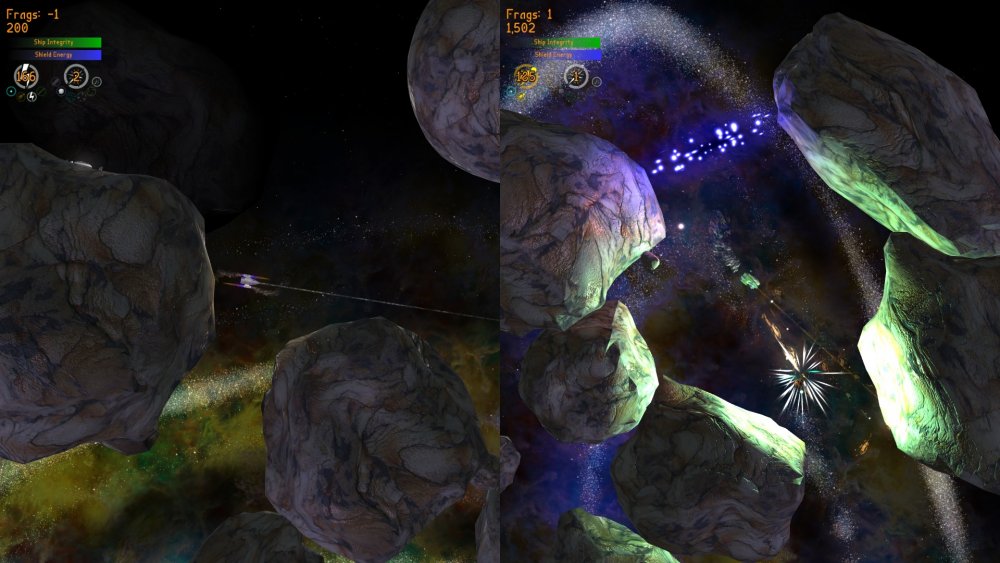This confession should come first: I seriously considered making Retrobooster only a single player experience when I started it. As a solo developer, more game modes sounded daunting. Fortunately, all the complaints from friends and my memories of co-op and melee games were too much to bear. In fact, the multiplayer modes in Retrobooster were originally called Co-op and Melee just like on my family's old Atari 800 Asteroids cartridge. Sadly, the first couple dozen people I showed it to had little idea what Co-op meant and no clue what Melee meant. “What's a melee?” I finally resigned that idea and renamed the modes to Cooperative and Deathmatch. At least that only compromises my nostalgia and not the gameplay.
Retrobooster aims to be an old school cave-flyer but with the most nimble ship possible. Unlike most other games in this genre, your ship has no drag and an extremely high top speed. Some late-game levels even demand that you fly at full speed in order to beat them. Retrobooster has the tightest of control schemes that you can keep improving at even after beating the game several times. This style of flying and all the shooting are the central mechanics of the game. It's pure skill.
From a design perspective, I enjoy games that have a thorough exploration of their core mechanics. If a game lets you jump high, it's satisfying to be given a lot of good reasons to jump high and maybe a double-jump and a power-up that lets you jump even higher. This sort of treatment just makes a game feel complete. After mulling this idea over early in the design process, it became the best reason I wanted to keep co-op in Retrobooster. Practicing the game's flying and shooting skills in all its claustrophobic spaces with multiple ships is a fundamental part of the fun. Leaving it out would make the whole game feel incomplete. The other big reason, of course, is that it's loads of fun to jump into an interactive physics playground with your friends and start blasting away.
Retrobooster now has split-screen co-op and deathmatch modes for up to four players. Networked multiplayer would probably be fun too, but, for reasons I can't put my finger on, I prefer split-screen for this style of game. However, the main reason I am leaving networked play out is because programming networked play at high quality is enormously difficult, and I don't want to do it if I can't do it well. Perhaps if this were not my first game and if I were working with another developer I would feel differently.

A New Perspective
A while back I heard some really good advice about game design. I'll probably catch hell later for not remembering where this came from. Every change you make to your design should improve your game for your core audience or for the general gaming audience or both. Changes that improve your game for one audience and hurt it for the other are to be avoided. After trying to apply this rule to different aspects of my game I realized there was a useful variation on it: look for changes that will improve one or more game mode and not hurt any other modes. Suddenly, having multiplayer modes in Retrobooster wasn't just more work--it was also a useful design tool. When I would get stuck trying to solve a problem for single player mode I could switch to looking at the problem from the perspective of co-op or deathmatch.
It was probably this methodology more than any other that shaped the weapon designs. When I was originally thinking of Retrobooster as a single player game, I planned on four weapons with a separate button to activate each one. It wasn't long before I realized that only four weapons was fairly dull in a deathmatch game, so I set a goal of ten weapons instead. There would be some primary weapons and some secondary weapons, and the player would be able to have one of each armed at all times. From the experimentation I had done with co-op, it was clear that it was often difficult to defend another player with regular shooting weapons. This led to the secondary weapons being mostly defensive, area-damage weapons. So when a teammate is in trouble, you don't always have to worry about placing accurate shots to provide some cover.
